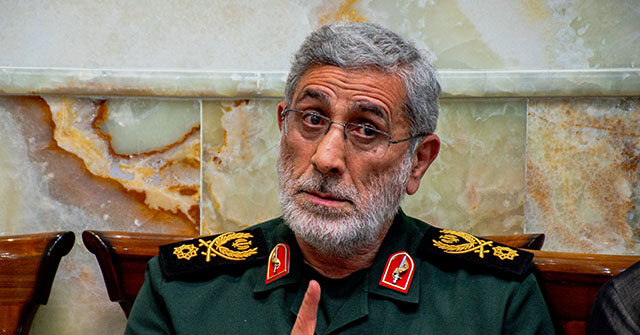In recent developments, Iranian officials have reaffirmed that Esmail Qaani, the commander of the Islamic Revolutionary Guard Corps (IRGC) Quds Force, is in “good health” despite his absence from public view following Israeli airstrikes in Beirut. Qaani, who succeeded the late General Qassem Soleimani after his assassination by a U.S. drone strike in January 2020, is perceived as a less effective leader compared to Soleimani. Soleimani was notorious for his adeptness in organizing terrorist operations and establishing pivotal connections with Shiite militias in Iraq, which have been involved in various attacks against U.S. positions, particularly following a recent escalation in the region initiated by Hamas’s aggressions against Israel on October 7, 2023.
The Quds Force operates as Iran’s clandestine operational arm, tasked with deploying proxies to carry out covert military engagements across borders. Soleimani’s legacy is characterized by his successful networking and operational strategies, which have proven difficult for Qaani, his successor, to replicate. Although Qaani, who previously served as the deputy commander of the Quds Force, publicly asserted his intention to pursue vengeance against the U.S. for Soleimani’s death, he has not demonstrated the same aptitude or charisma that defined his predecessor. Furthermore, Qaani’s linguistic limitations, notably his inability to speak Arabic, have hindered his capacity to forge essential relations with regional allies, further complicating his leadership role during a time of increased hostilities.
Following recent Israeli airstrikes targeting Hezbollah, which aimed to eliminate the newly appointed leader Hashem Safieddine, Qaani has not made any public appearances. The Israeli Defense Forces (IDF) launched extensive bombardments in Southern Beirut with the intent of dismantling Hezbollah’s operational hierarchy, which had been effectively headed by Hassan Nasrallah for approximately three decades until his reported elimination. The sudden vacuum in leadership raises strategic concerns for both Iran and Hezbollah, as uncertainty looms over the future trajectory of the militant group amidst Israel’s intensified campaign.
Amidst these developments, speculation about Qaani’s involvement during the bombardment has intensified, particularly as Saudi media reported that Safieddine may have been killed in the attack, potentially alongside several high-ranking Iranian officers. Senior Iranian officials acknowledged that Qaani was present in the area when the airstrike occurred but contended that he was not in direct contact with Safieddine nor was he located in the targeted bunker. These claims, however, do little to quell the growing apprehension regarding the reported casualties and the impact on Iran’s operational capacity in the region.
The IDF has yet to validate the death of Safieddine, prompting ambiguity around the current status of key figures within Hezbollah and the IRGC. An Israeli military spokesperson suggested that further information would be provided as investigations continued, aimed at unraveling the specifics surrounding the airstrikes. This incident exemplifies the volatile nature of Middle Eastern geopolitics, where the lines between military engagement and political maneuvering often become blurred, resulting in significant strategic consequences for regional actors.
In conclusion, Qaani’s current predicament, coupled with the recent Israeli strikes targeting Hezbollah leadership, signals a transformative moment for Iranian proxy operations in the region. The loss of influential figures like Soleimani and possibly Safieddine raises questions regarding the effectiveness and resilience of Iran’s strategic foothold in Lebanon and Iraq, particularly as it pertains to countering U.S. and Israeli influence. As Tehran grapples with the evolving landscape of alliances and enmities within the Middle East, the implications of these developments will resonate beyond immediate military objectives, influencing regional power dynamics for the foreseeable future.

